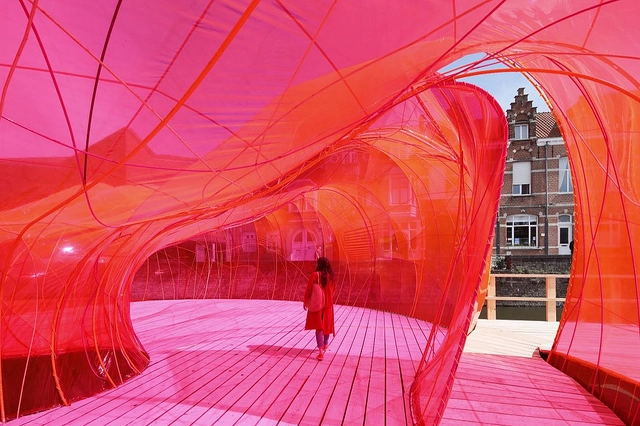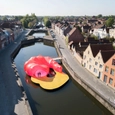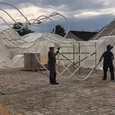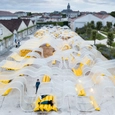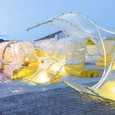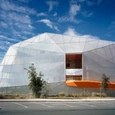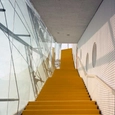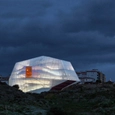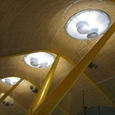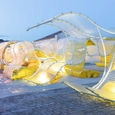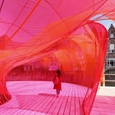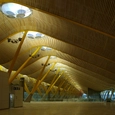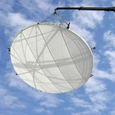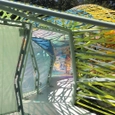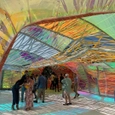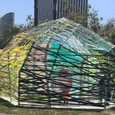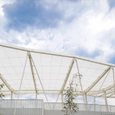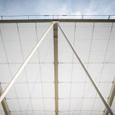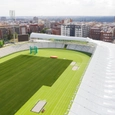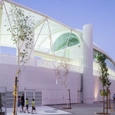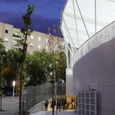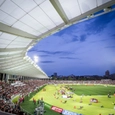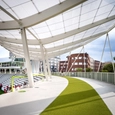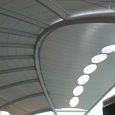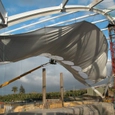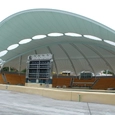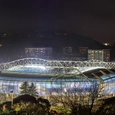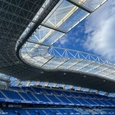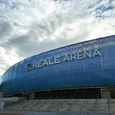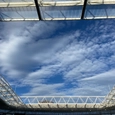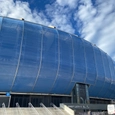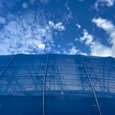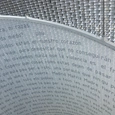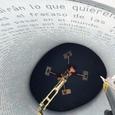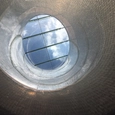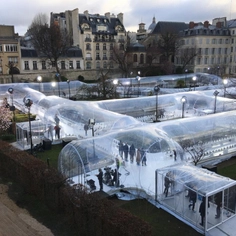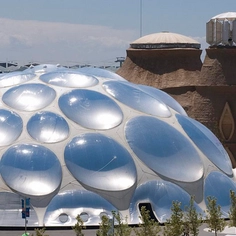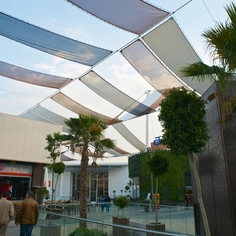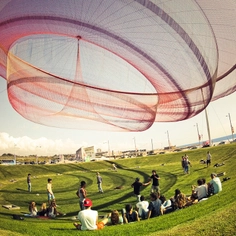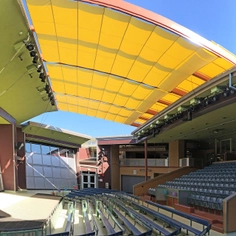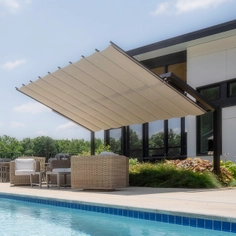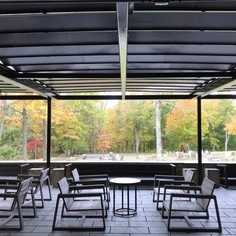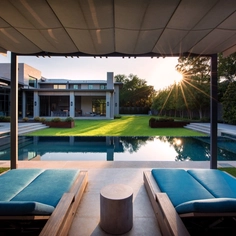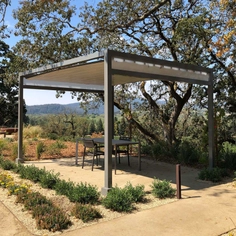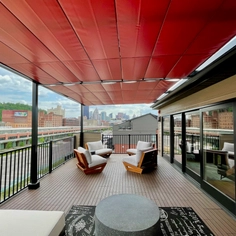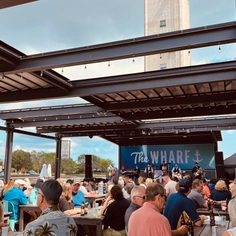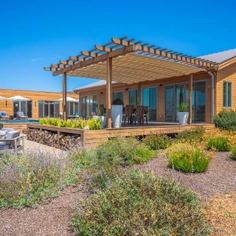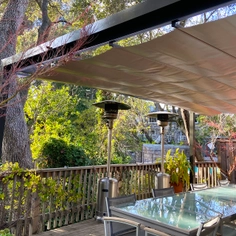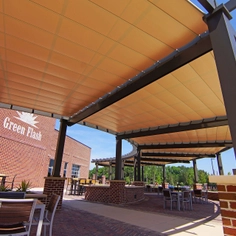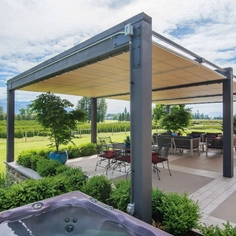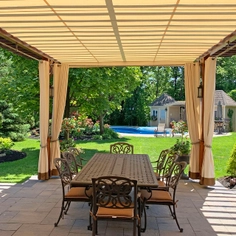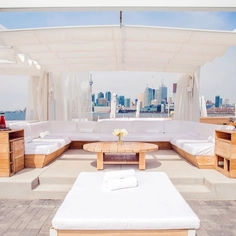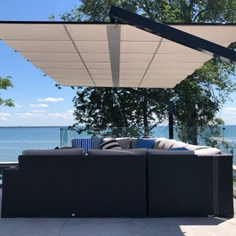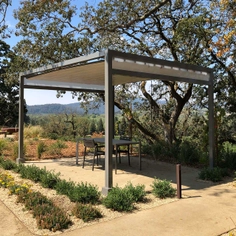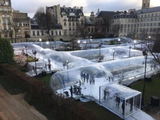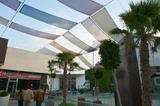Single-layer covers and façades are simple sheet roofs and façades. These systems are the most common textile structures seen. Lastra & Zorilla makes single-layer covers and façades using a single layer of foil, stretching it so that it is in tension when it reaches its projected contour.
Materials
The most common materials are ETFE, PVC, or PTFE. These tensioned structures can use any material with enough resistance and flexibility including tapes, cables, networks, and more.
Shape and Form
The geometry of the single sheet structure is defined by the tensioning elements. These can be any of the following that force the fabric to adopt a certain shape.:
- Contours (girders or cables)
- Tie elements (cables)
- Compression (poles that pierce or arches that mark its shape)
The idea is to take advantage of the flexibility that fabrics offer to adopt sinuous and aesthetic forms that other rigid materials cannot. Simple sheets of fabric will always adopt anticlastic shapes, meaning that the main surface curvatures will be opposite, forming a saddle effect.
Possible Sizes
The maximum panel span used to create the single-layer façade or roof will depend on the material in which it is made, the geometry, the erection system, the confection complexity and the loads that the roof will receive. A study with the proposed geometry, material characteristics and project loads can define the maximum size that these elements can have.
Some geometries can put too much strain on the fabric, causing stresses in specific places so for that reason, certain geometries have a maximum allowable size depending on the material used. With cable reinforcement, the maximum dimensions of the fabrics can be increased.
Attachments
Depending on the fabric used, assembly process or the main structure there are many fixing options:
- Rigid contours (beams)
These use different types of aluminum profiles. Some of these are used to be fixed to the foil and others are fixed to the main structure. Afterward, these two classes of profiles will fit one with one another, allowing tension adjustment so that the fabric stretches. - Flexible contours (rope cables)
The contours of the fabric have a pocket through which the perimeter cables are threaded. Once the cables are fixed at their ends to the main structure, they can be tensioned and tighten the fabric as they straighten.
Calculating Cost
The price depends on many things:
- Material
- Fixing quantity and type
- Number of panels that make up the surface
- Complexity of manufacture
- Complexity of assembly
One piece of foil used to cover a space is costed differently from several pieces. If a design is broken into multiple pieces for whatever reason, it will require more structure (contours to attach to), more profiles to attach to those contours, more fabrication because there are more pieces and more assembly hours.
Normally, small roofs or facades have a higher price per square meter ratio than large ones, since the influence of fixed costs is greater in this ratio. Each project undertaken by Lastra & Zorilla is designed according to its own particular conditions so the pricing will depend on all of the above factors.


